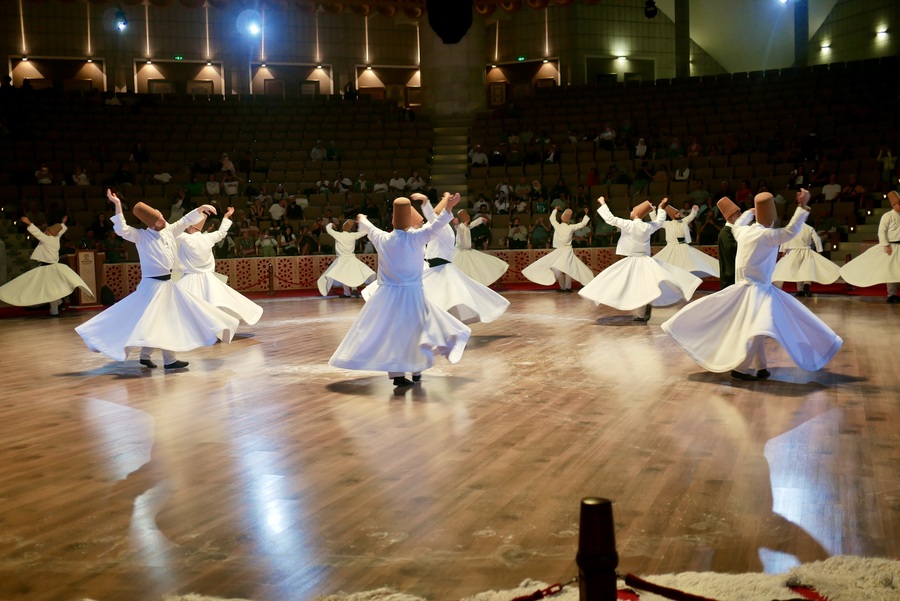
Konya Turkey: City of the Whirling Dervishes
At first glance, Konya doesn’t appear to be one of Turkey’s major heavy-hitting tourist destinations. Travelers often overlook the conservative university town in favor of Istanbul, Cappadocia, and Ephesus.
Most of those who step foot in Konya are either pilgrims flocking to Rumi’s tomb, or tourists crossing central Turkey overland.
But if you’re interested in the cultural aspects of Turkey—in particular sufism and the mystical side of Islam—Konya is the place to be.
Konya Turkey: An Overview
Konya is a place that I would have loved to explore more fully. My family and I visited the city for one day in order to attend the famous Whirling Dervish ceremony at the Mevlana Cultural Center. The visit satisfied our desire to see the famous Sufi meditation, but it also left us wishing we would have been able to explore the less touristy sides of Turkey’s religious capital.
Konya is more conservative than the other places we visited in Turkey. I found it to be quite affordable too, with food costing only a fraction of what it did in the country’s more popular tourist zones.
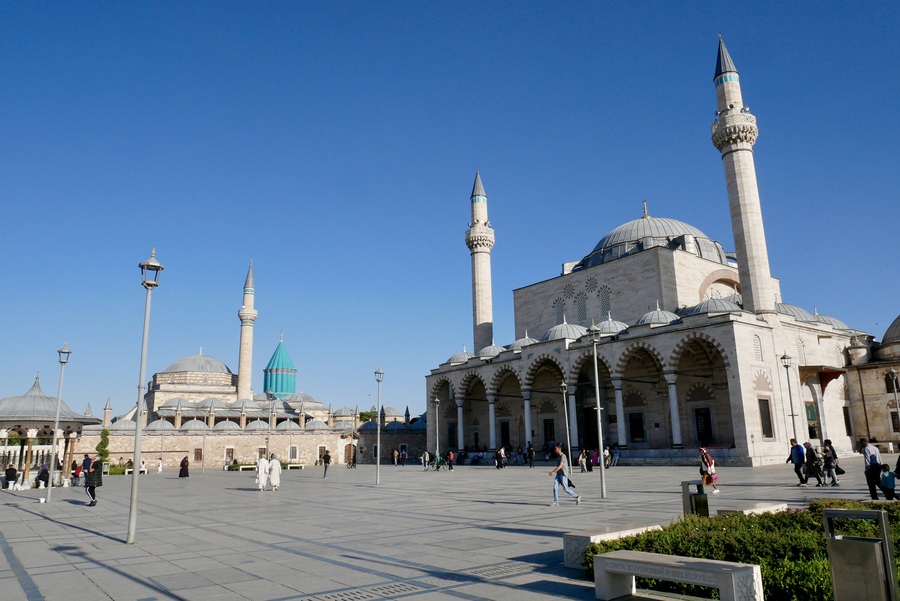
Famous for its association with Sufism and the Whirling Dervishes, the city attracts both religious pilgrims and travelers seeking to connect with Turkey’s spiritual roots.
Its most important site is the Mevlana complex, a museum that houses the tomb of the Islamic poet, Rumi (also known as Mevlana).
Within walking distance of the complex, you’ll find a large square, noteworthy mosques, and the city’s historic bazaar.
Who Was Mevlana?
Jalaluddin Muhammad Balkhi Rumi was a 13th-century Persian poet and Islamic scholar associated with Sufism.
Rumi’s works greatly influenced literature and thought throughout the Muslim world. His works also found a wide audience in the Indian Subcontinent. By the end of the 20th century, Rumi’s poetry achieved circulation in western Europe and the United States.
Rumi delved into Islam’s mystical side after a brief but intense relationship with Persian mystic Shams Tabrizi. Tabrizi, a traveling merchant and Rumi’s spiritual guide, is heavily featured in Rumi’s poems and teachings. His message of love and religious tolerance is universal. It transcends generations and international borders.
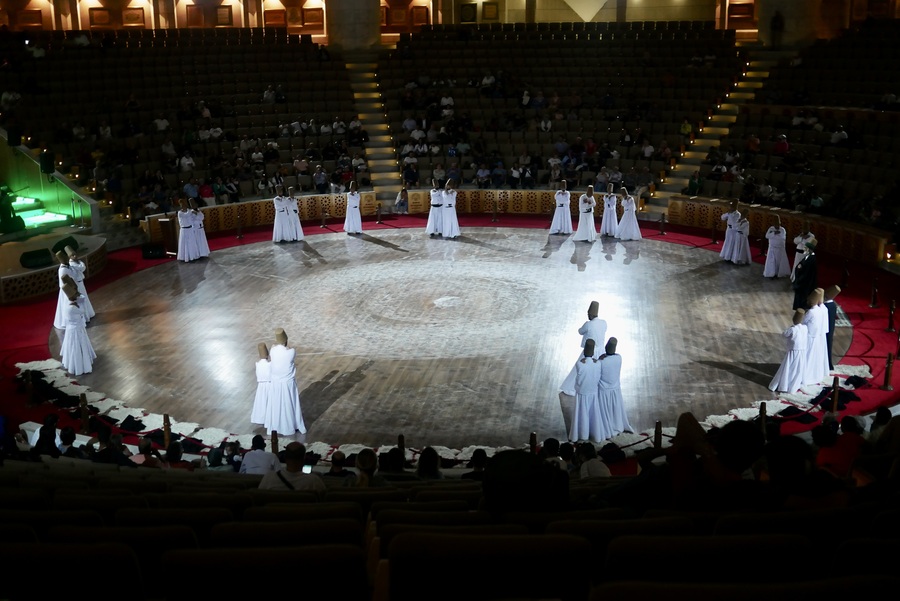
Upon his death, Rumi’s followers founded the Mevlevi Order. The order has since become synonymous with the Whirling Dervishes and Sema ceremony.
The Sema (Listening) Ceremony
The Mevlevis, also known as the “Whirling Dervishes,” are famous for their practice of dhikr—a ritual that consists of twirling around and around in a meditative state. Groups of devotees spin hypnotically while chanting “Allah” with every 360-degree rotation.
The whirling is part of the formal Sema ceremony. Sufi Dervishes believe that the act of spinning in a trance-like state helps people cleanse their souls, eliminate bad habits, and express their love for God. It is a mesmerizing ritual to witness.
The Whirling Dervish ceremony is what most people imagine when they think of Sufism. It is nothing like the Sufi ceremony that Dan and I saw in Sudan a few years prior.
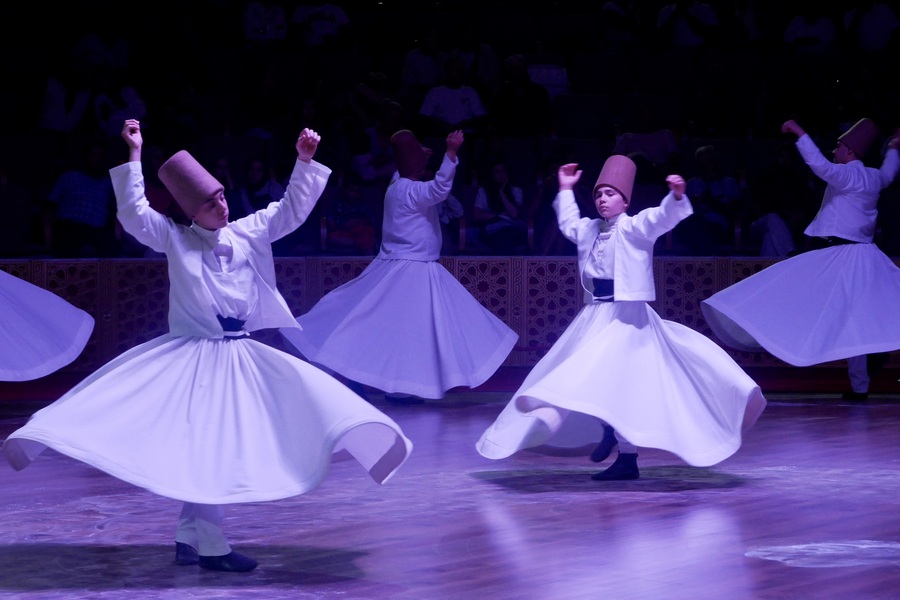
The Sema ceremony includes music, singing, poetry recitals, and prayer. During the ceremony, dancers first appear wearing black cloaks that symbolize death. As the ceremony progresses, they discard these outer garments and reveal white robes, an emblem of resurrection. On their heads they wear conical brown felt hats which are meant to resemble tombstones (representing the death of the ego).

The twirling is a form of spiritual meditation that has become a cultural attraction. The ceremony is on Unesco’s Intangible Cultural Heritage of Humanity list.
Sufism in Turkey
Sufis strive to attain perfection of worship through focusing on spirituality, asceticism, meditation and reflection. Tending to be apolitical and moderate, Sufis are concerned more with inward spiritual change than with external manifestations. Sufism isn’t exactly a type of Islam, but rather a way of understanding it.
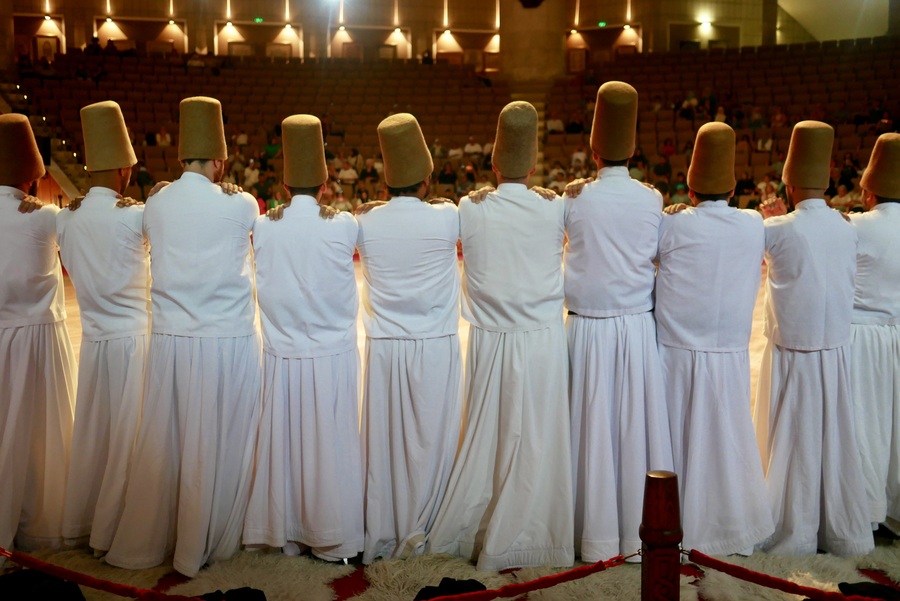
Many Sufi orders took root in Turkey over the centuries.The practice has raised suspicion among dictatorial governments and been shunned by religious fundamentalists.
In 1925, the Ottomans outlawed Sufism as part of secular reforms, but the movement’s deep roots enabled it to thrive underground.
Today, despite being officially banned, Sufism flourishes. It is not difficult to find Whirling Dervish performances throughout Turkey, especially in Konya.
Where to See the Whirling Dervishes in Konya
Konya is the best place in Turkey to see the Whirling Dervishes. If you’re able to plan your visit for Saturday, you’ll be able to witness the performance at the Mevlana Cultural Center (arguably the top place to see the Whirling Dervishes in Turkey).
-
The Mevlana Cultural Center
Performances occur every Saturday evening at the Mevlana Cultural Center. We were lucky enough to be able to work our itinerary around the weekly ritual.
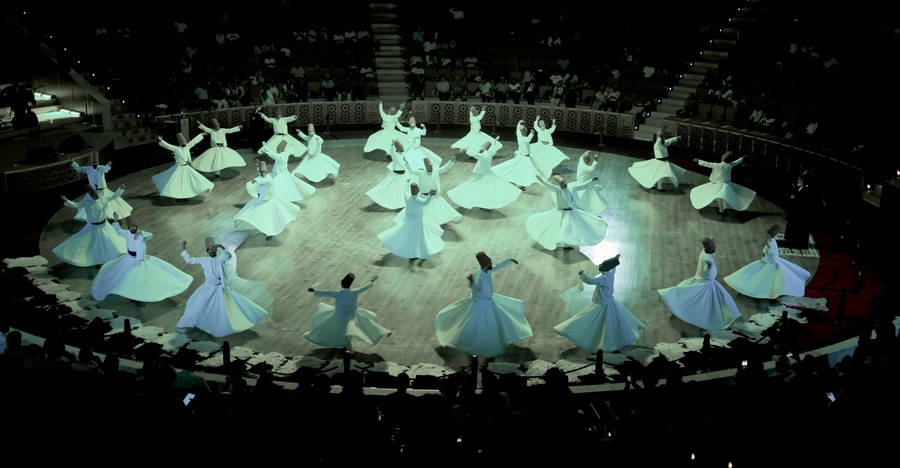
The performance costs around $2 per spectator. There was plenty of seating available when we visited and we had no problem buying tickets at the door.
-
Mevlana Museum Garden
The Mevlana Museum garden holds Whirling Dervish performances every Thursday throughout the summer. I suggest you double check the date and times, as I’m unsure of the schedule’s consistency.
The Mevlana Museum
For Muslims and non-Muslims alike, the Mevlana Museum remains Konya’s #1 tourist draw. The building’s tiled turquoise dome is one of Turkey’s most iconic sights.
The complex dates back to 1273. It became a museum in 1926.
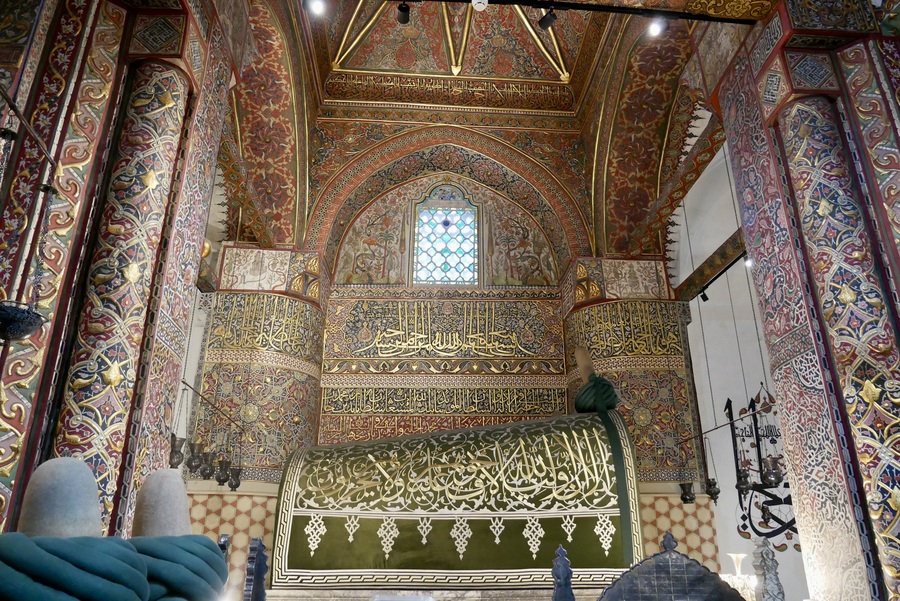
The museum houses the former lodge of the whirling dervishes and is home to Rumi’s tomb.
More than 1.5 million (mostly Turkish) tourists visit Rumi’s tomb every year.
Other Things to Do in Konya
During our visit to Konya, we were surprised by the city’s appeal beyond its connection to Sufism.
I wish we could have spent more time strolling the streets and neighborhoods of Konya.
-
The Konya Bazaar
Konya’s small bazaar neighborhood stretches from Mevlana Meydanı. It is a picturesque area, that bustles with ice cream shops, spice vendors, textile stores, and jewelers.
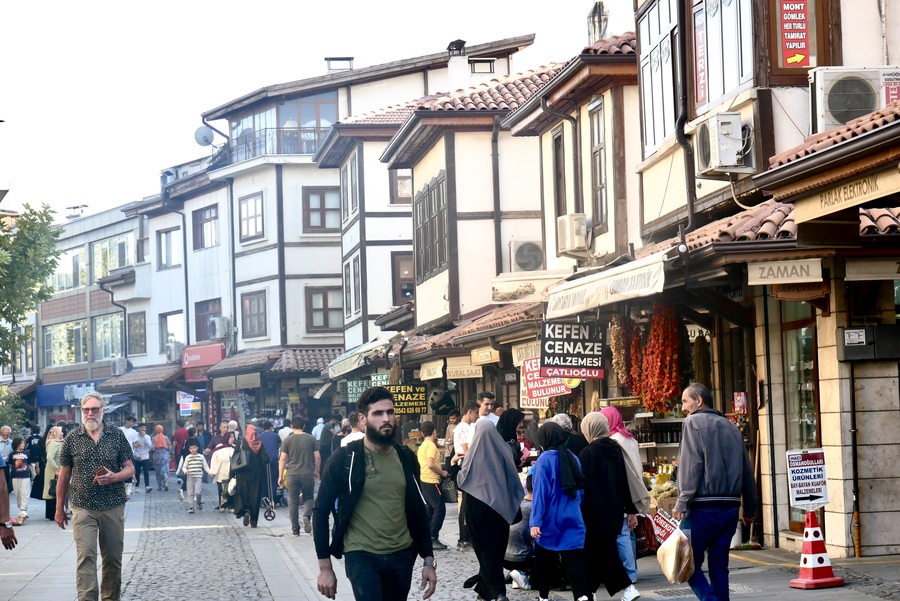
The Konya marketplace is nothing like the overwhelming and overstimulating Grand Bazaar in Istanbul, but it is nonetheless a pleasant place to wander.
-
Konya Tropical Butterfly Garden
We would have loved to take Elio to the Konya Butterfly Garden, but we had plans to continue onward to Pamukkale after our brief stay in Konya. The garden houses over 20,000 butterflies from around the world and offers a great complement to the city’s glut of historical attractions. Especially when you have kids in tow.
Where to Stay in Konya
We stayed at the ideally-located Sufi Homes during our stay in Konya. The small colorful hotel was a comfortable and convenient budget option located within two blocks of the main square and Mevlana Museum.
Nearby, the THINK Hotel is a budget option with quirky decor, free parking and a central location.
For a midrange accommodation option, the Konya Dervish Hotel boasts a garden, clean rooms, and exceptional reviews.
If you prefer booking at a known entity, Konya’s Hilton Garden Inn is a safe bet.
Whirling Dervishes in Istanbul
Konya may be synonymous with Sufism, but it is by no means the only place in Turkey where you can see the Whirling Dervishes. There are plenty of performance venues in Istanbul too—some more authentic and some that are complete tourist traps—for travelers who can’t fit central Turkey into their travel plans.
-
Galata Mevlevi Museum
The Galata Mevlevi Museum is undoubtedly the most famous Whirling Dervish hall in Istanbul. It is located on Galipdede Caddesi, near the end of Istiklal Street. The ceremony takes place every Sunday at 17:00. You can only buy tickets on location starting at noon on Saturday.
Photography of the ceremony is not allowed.
-
Hodjapasha Dance Theater
The Hodjapasha Dance Theater is a very popular venue located within walking distance of the Sirkeci train station, in a converted 15th-century Turkish bath.
Performances take place daily at 19:00.
*****
A typical Turkey itinerary will likely take you to Istanbul, Cappadocia and Ephesus. With a little more time, you might consider Pamukkale or a destination along the famed Turquoise Coast.
Konya often manages to fall somewhere down the list of places to see, despite being a popular Muslim pilgrimage site.
For me and my family, Konya was not merely a pitstop en route to Pamukkale, however. It was also a reminder of Turkey’s historical richness and a window into the country’s religious heart.


